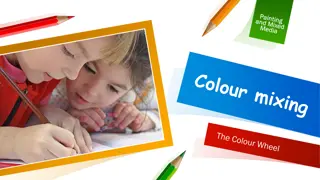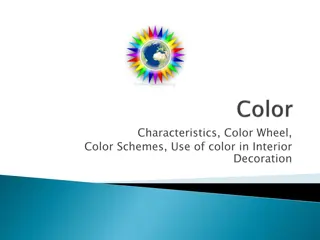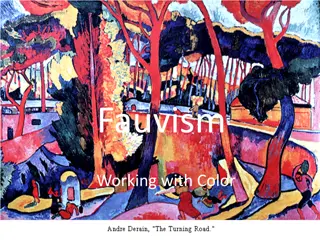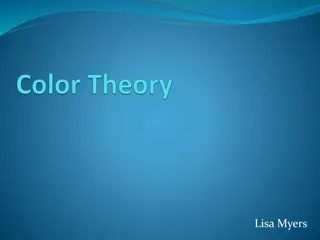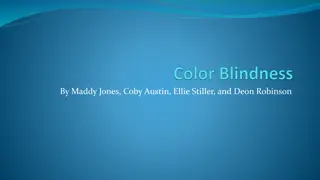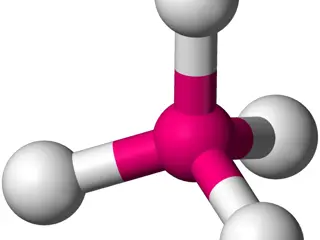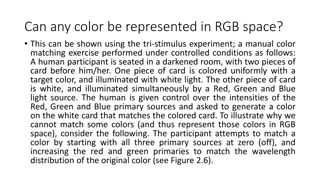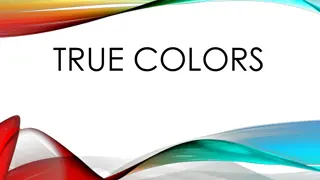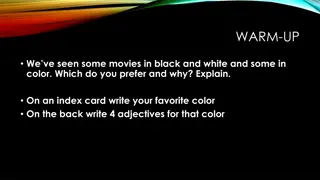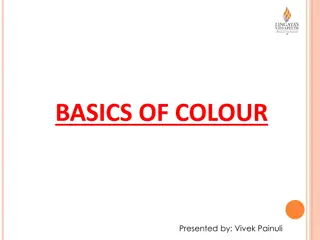Understanding Color Theory: A Comprehensive Guide to Colors
Explore the fascinating world of colors with an in-depth look into color theory. Learn about chromatic and achromatic colors, neutral colors, hues, color wheels, primary and secondary colors, tertiary colors, values, tints, shades, and tones. Delve into the visual responses of the eye to reflected rays of light, differentiating between pure colors and color variations. Enhance your understanding of how colors are derived, mixed, and perceived in the world of design and art.
Download Presentation

Please find below an Image/Link to download the presentation.
The content on the website is provided AS IS for your information and personal use only. It may not be sold, licensed, or shared on other websites without obtaining consent from the author. Download presentation by click this link. If you encounter any issues during the download, it is possible that the publisher has removed the file from their server.
E N D
Presentation Transcript
C COLOR OLOR
C COLOR OLOR- The visual response of the eye to reflected rays of light Element of design Chromatic colors Chromatic colors- Colors derived from the visible spectrum All colors other than black, white or gray Achromatic colors Achromatic colors- White, black, & any values of gray Do not appear on the color wheel Neutral colors Neutral colors- Achromatic color to which a small amount of hue has been added
H HUE UE- - The descriptive name of color (i.E. Red, yellow, & green) Pure color w/o black, white, or gray added Defines a specific spot on the color wheel 12 hues on the color wheel
C COLOR OLOR WHEEL WHEEL Twelve hour color system which was developed by Louis Prang, an American Printer in 1876.
P PRIMARY RIMARY C COLORS OLORS- - Red, yellow, & blue Spaced equidistantly apart on the color wheel Cannot be created by mixing any other colors
S SECONDARY ECONDARYCOLORS COLORS- Orange, green, & violet Created by mixing two primary colors Placed in between primary colors
T TERTIARY ERTIARYCOLORS COLORS- Red-orange, red-violet, blue-violet, blue-green, yellow-green, & yellow-orange Between primary and secondary colors Mixing primary & secondary colors Primary color is always listed first with a hyphen in the center of the word
V VALUE ALUE- - The lightness or darkness of a hue Achieved by the addition of black, white, or gray Shade A hue which has been darkened by the addition of black Deeper in appearance I.E. Navy is a shade of blue, burgundy is a shade of red Tint A hue which has been lightened by the addition of white Pastel in appearance I.E. Baby blue is a tint of blue, pink is a tint of red Tone A hue which has been muted by the addition of gray Dusty in appearance I.E. Country blue is a tone of blue, mauve is a tone of red
TINT Hue + TINT Hue + White White TONE Hue + TONE Hue + Gray Gray HUE HUE SHADE Hue + SHADE Hue + Black Black
A ADVANCING DVANCING ( (WARM COLORS COLORS- - WARM) ) Aggressive or warm Visually move forward toward the viewer Red, orange, yellow Association with warm and hot things Active, cheery, evoking warm and happy feelings Dominate, look larger Informal and blend Irritating if too much
R RECEDING ECEDING ( (COOL COLORS COLORS- COOL) ) Passive or cool Visually pull back or recede from the viewer Look smaller Blue, green, violet Association with cool things Restful, peaceful, soothing, quiet, melancholy, less friendly May appear formal and lack unity Cannot be seen from a distance
C COLOR OLORHARMONIES HARMONIES Groupings of specific hues and/or different values of a hue A pleasing or useful combination Changing value does not change harmony ie. Pink and mint green may be used and it is still complementary color harmony Achromatic colors can be included in any color harmony
COLOR HARMONIES-- Achromatic color harmony Achromatic color harmony- A grouping of colors without hue; white, black, and any values of gray. Monochromatic color harmony Monochromatic color harmony- - A grouping of different values of one hue May include achromatic colors An example would be red and tints, tones, shades of red i.e. pink, mauve, red, & burgundy Polychromatic color harmony Polychromatic color harmony- - A multicolored grouping of many hues which may otherwise be unrelated
A ANALOGOUS NALOGOUSCOLOR HARMONY HARMONY- COLOR A color harmony featuring adjacent hues on the color wheel No more than one primary color Colors form an angle of up to 90 degrees on the color wheel One color usually dominates One of the most harmonious and pleasing of all I.E. Green, blue-green, and yellow-green, with green dominating
C COMPLEMENTARY OMPLEMENTARY COLOR COLORHARMONY HARMONY- A pair of hues directly opposite each other on the color wheel I.E. Red & green, violet & yellow, or blue & orange Many schools select their colors from a complementary color harmony
S SPLIT PLITCOMPLEMENTARY COMPLEMENTARY COLOR COLORHARMONY HARMONY- - A trio of hues, consisting of a hue and the two hues on either side of its direct complement I.E. Violet, yellow-orange, & yellow-green Many restaurants use a split-complementary color scheme
T TRIADIC RIADICCOLOR HARMONY HARMONY- - COLOR A grouping of three hues which are equidistant on the color wheel I.E. Primary colors--red, blue & yellow Tints of primaries-pink, baby blue, & soft yellow Changing the value does not change the color harmony
T TETRADIC ETRADICCOLOR HARMONY HARMONY- COLOR A grouping of four hues which are equidistant on the color wheel
EXAMPLESOF COLOR ACTIVITY-- MANDALA


